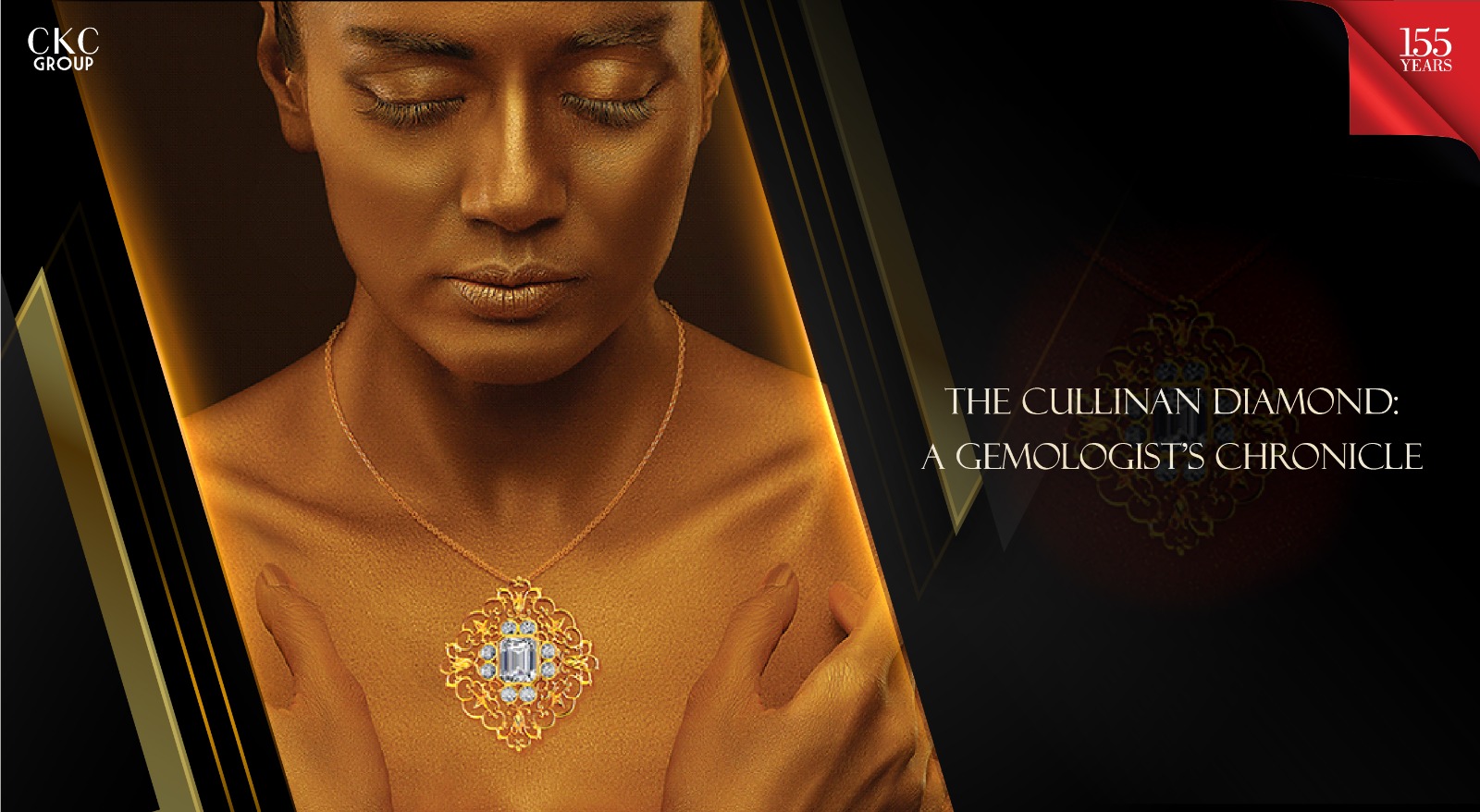The Cullinan Diamond: A Gemologist’s Chronicle
A gemologist has been afforded the unique privilege of studying many Gemstones, each with its own story. However, few can match the lore and grandeur of the Cullinan Diamond. Discovered on the 26th of January, 1905, within the Premier Diamond Mine in South Africa, this behemoth Gemstone was found just 9 meters below the surface, embedded in a kimberlite pipe dating back an astonishing 1,200 million years—quite a senior figure for such geological formations.

With a weight of 3,106 carats and dimensions measuring a substantial four by two and a half by two inches, the Cullinan Diamond claims the title of the largest Diamond ever unearthed. It boasted not only of its staggering size but also its impeccable colour and purity, qualities that any connoisseur of Diamonds would esteem highly. Its four cleavage planes, particularly one with a remarkably smooth cleavage face, suggested the tantalizing possibility that other fragments of the Diamond might remain undiscovered within the mine’s depths.

To an unversed observer, the Cullinan might merely have seemed like a piece of crystalline ice, but its value is undeniably greater than any frozen spectacle. The Transvaal government recognized this worth, purchasing the gem for 150,000 pounds before bestowing it upon King Edward VII of Great Britain in 1907 as a diplomatic gift.

The tale of the Cullinan’s transformation is as fascinating as its discovery. Entrusted to the Asscher Diamond Cutting factory in Amsterdam, the Diamond underwent an extensive nine-month analysis before Joseph Asscher himself cleaved it. On February 10, 1908, Asscher split the gem into two main pieces, a process carefully engineered to eliminate a flaw at the heart of the Diamond. This initial cleavage was the precursor to the Diamond being further divided into nine major stones and many smaller pieces.
What followed was a meticulous period of grinding and polishing, culminating in November of 1908. King Edward VII had wisely agreed that the Asscher company would retain the smaller cut gems as their fee, although they later sold the 11.50-carat Cullinan VI back to the King for his consort, Queen Alexandra.

The larger Gems—the Cullinan I, or “The Star of Africa,” and the Cullinan II, also known as the “Lesser Star of Africa”—were incorporated into the regalia of the British Crown Jewels. Their siblings adorned various pieces of royal jewellery, signifying not just wealth but the storied history of the British monarchy.
Upon the project’s conclusion, the Cullinan Diamond yielded 105 Gemstones, including nine major ones and 96 smaller brilliants. The nine larger stones and their subsequent polished brethren weighed in at a combined total of 1,063 carats. This number represented a cutting loss of about 65 percent, a remarkably efficient yield given the initial size of the raw Cullinan.
In retrospect, the Cullinan Diamond serves as a tangible connection to the Earth’s primordial past, a testament to human ingenuity, and an enduring symbol of geopolitical diplomacy. For a gemologist, the Cullinan is not merely a diamond; it is a veritable chapter in the annals of gemology, rich with intrigue and splendour.

Cullinan I “The Star of Africa”, Pear Cut, 530.20 carats with 74 facets, length 53mm in sovereign’s Royal Scepter as part of British Crown Jewels.

Cullinan Il, also known as the “Lesser Star of Africa” Cushion cut 317.40 carats Length 40mm, centre front of the imperial State Crown Great Britain.

Cushion cut 317.40 carats Length 40mm, centre front of the imperial State Crown Great Britain. Cullinan Il, Pear cut 94.40 carats Length 36mm – Final of Queen Mary’s Crown.

Cullinan IV, Square Cushion cut, 63.60 carats Length 22mm. Originally set in the band of the Queen Mary’s crown for the Coronation in 1911. But can also be worn as jeweiry “pendant brooch”.

Cullinan V, Heart shape “Triangle pear “18.50 carats Length 17mm. Originally mounted ni brooch of Queen Mary also to be worn ni circlet of her crown.

Cullinan VII, Marquise cut 8.80 carats Length 24mm. Mounted in a pendant on a small all-diamond brooch.

Cullinan VIII, Cushion cut 6.80 carats Length 12mm. Mounted in small brooch with Cullinan Seven.

Cullinan XI, Pear cut 4.39 carats Length 10mm. Mounted in the ring made for Queen Mary. It sometimes gets worn by Queen Elizabeth.
On completion, there were in total 105 gemstones, 9 major stones, 96 smaller brilliant, and 9.50 Carats unpolished pieces. The total weight of polished gemstones was 1063 carats, with a 65 percent cutting loss.
Every facet of the Cullinan Diamond tells a story of geological wonder and the meticulous artistry of its cutting and polishing. It is a narrative that mirrors the storied past of the C Krishniah Chetty Group, who, over generations, have mastered the art of transforming raw, majestic beauty into wearable symbols of power and prestige, fit for the adornment of royalty.





